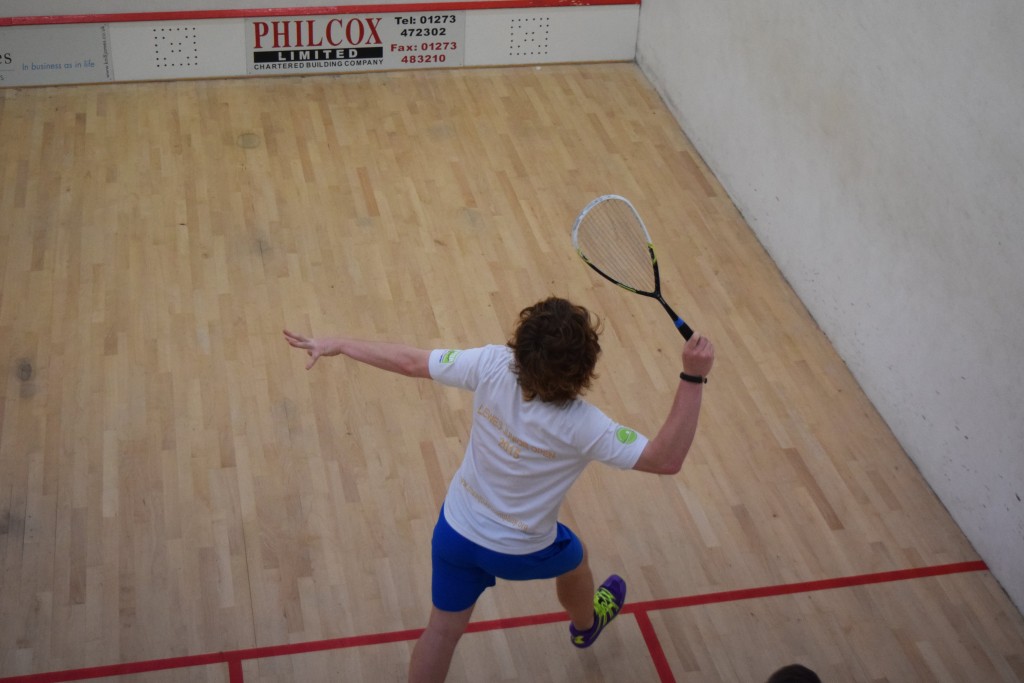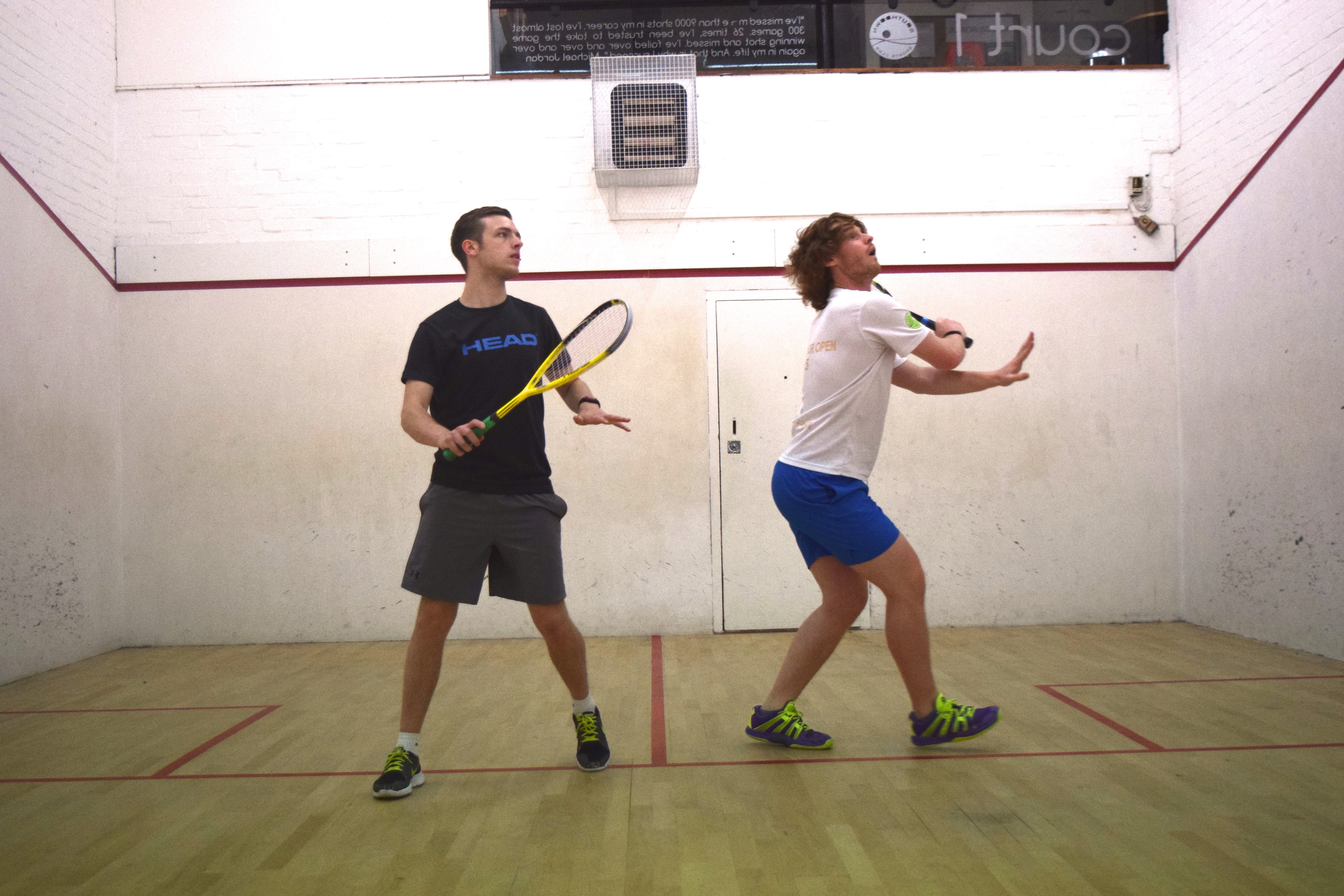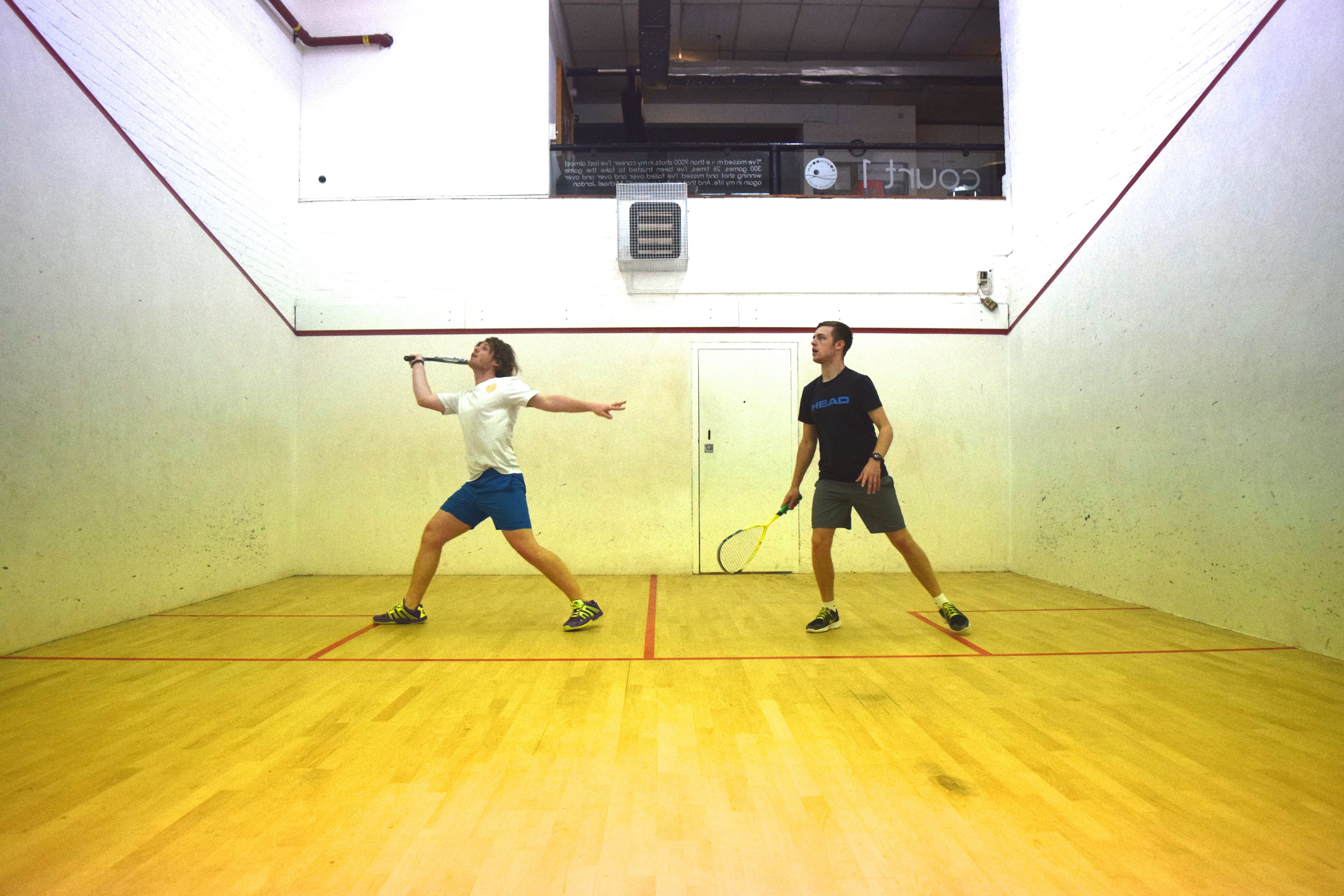A small tip for improving your forehand volley
When hitting a forehand volley above the head, it is a very common but lazy technique for players to ‘swat’ at the ball with a frying pan style. By this, I mean starting with the racket face and inside of your wrist and palm directly facing the front wall and swinging downwards by bringing your hand straight towards the floor, not unlike a tennis smash. This style can be effective from time to time in hitting the ball hard and bringing it low but it can also result in errors and is rarely as accurate or consistent as an overhead volley hit with proper technique.
Opening the racket face and chopping
The way to achieve greater accuracy with overhead forehand volleys is to really open the racket face. For these forehand volleys, you can open your racket face by rotating the forearm clockwise (right handed players) or anti-clockwise (left handed players) so that the edge of your racket goes towards the ball first. If you can hit the ball with an open racket face, even when the ball is up high you will have much greater control over the shot. To bring the ball low, you will need to swing the racket from high to low, almost in a chopping motion. This ‘chopping’ motion as part of a high to low swing with an open racket face gives you far greater fine control over the ball than using a flat, frying pan swat swing.
This chopping motion can be particularly useful when dealing with a high serve or when you are presented with an opportunity to attack a ball in the middle of the court, so have a go and see if you can improve the quality and consistency of your overhead volleys.



